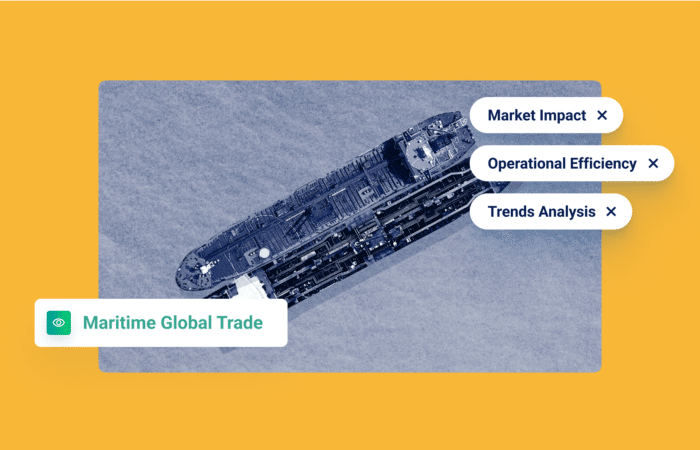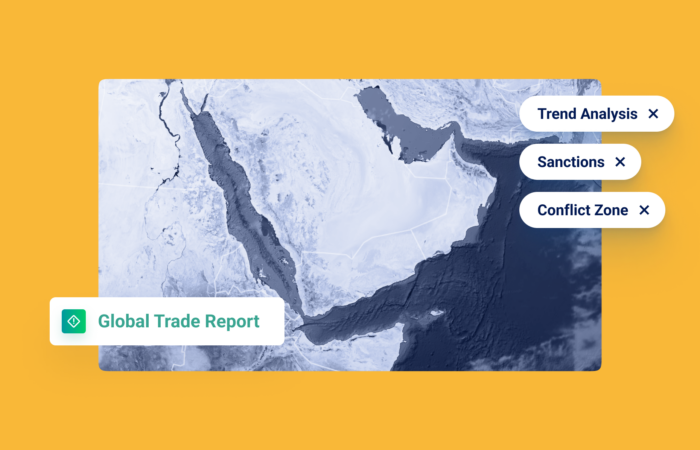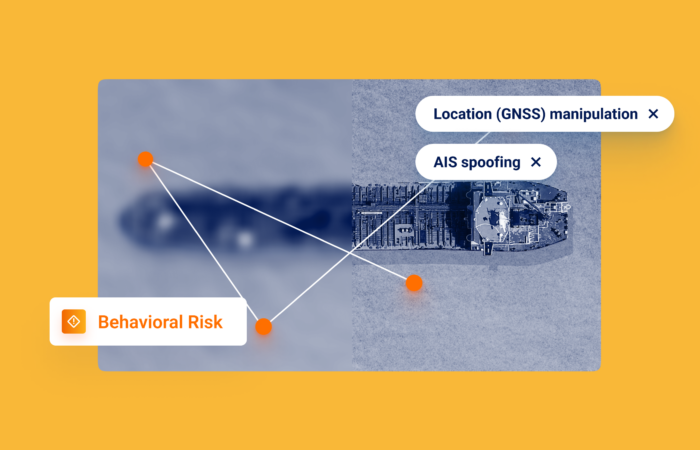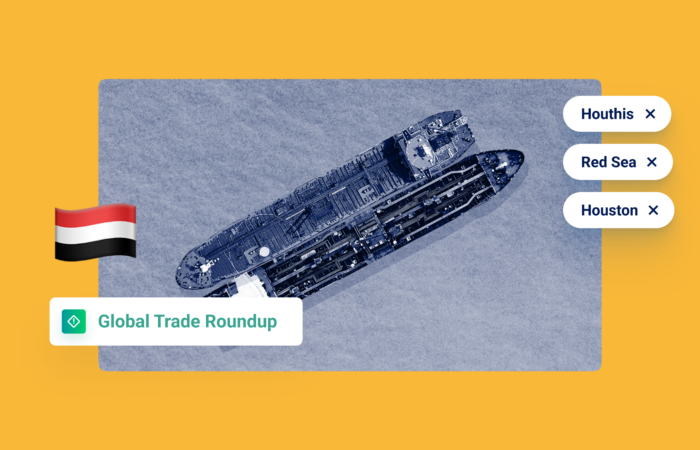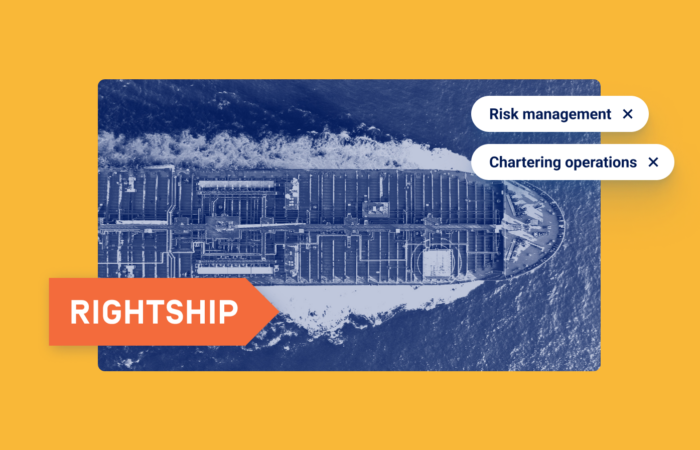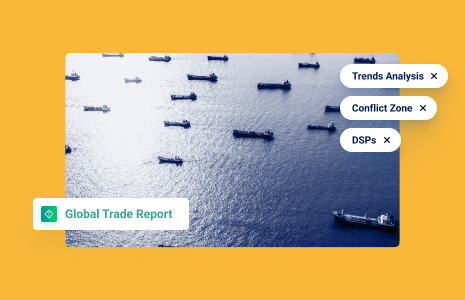What’s inside?
An ecosystem already on edge from months of Houthi rebel attacks in the Red Sea, the Panama Canal drought, and continued Russia-related sanctions is now coping with the aftermath of Iran’s big attack.
Having Russian backing since the outbreak of the Ukraine war seems to have emboldened the Iranians, creating a potentially dangerous new maritime ecosystem with possible effects on commercial, trade, and ocean freight activities in the area.
Our recent Global Trade Report examined Iran’s recent attack and the before-and-after impact on the maritime ecosystem.
Shipping Companies on High Alert
Iran launched more than 300 missiles, drones, and rockets at Israel on April 14, saying it was retaliation for what Iran claimed was an Israeli strike on a site in Damascus on April 1.
Despite this difficult and complicated situation, maritime activities need to continue. In April 2024, 12,367 vessels made 51,930 area visits in war-risk areas worldwide. Most area visits were by cargo vessels (945%), tankers (25%), service (21%), or fishing vessels (6%). Less than 1% of the visits were by military or law enforcement vessels.

A state of active conflict does not necessarily mean a halt in the movement of goods or ongoing commerce activities in these areas. Despite the heightened risk, commercial vessels inevitably continue to sail through.
Preparing with Evasive Action
There was speculation regarding this attack for two weeks. Knowing that it was imminent/extremely likely, shipping companies and traders prepared and took action.
Windard’s Maritime AI™ platform showed a 450% increase in destination updates in the Arabian Gulf between April 7-12. There were similar patterns of evasive acts – transmitting the presence of armed guards on board, and Chinese/Syrian/Russian crew members, claiming no connection to Israel, etc. Some vessels made U-turns in the area, others drifted in a “wait-and-see” pattern, but all adopted some evasive measures.
Immediately following the seizure of the MSC Aries – a Portuguese-flagged container ship that was seized by Iran on April 13 for “violating maritime laws” – there was a 200% increase in dark activities conducted by cargo vessels in the Gulf of Oman and Strait of Hormuz, likely by vessels trying to hide their location.
Dark activities in the Gulf of Oman and Strait of Hormuz by cargo vessels, April 2-13, 2024.
There was a 50% increase in vessels anchoring for over six hours in Suez (North and South port waiting areas) between April 4-11, likely to await further directions for entry to the Red Sea (due to the situation).
The heightened tension and looming attack had a clear impact on trade in Iran’s territorial waters. In the two weeks leading up to the Iranian attack, port calls in Iran by cargo vessels and tankers steadily declined and only began increasing again after the Iranian missile attack on April 14, 2024.
Port calls in Iran by cargo vessels and tankers, March 30- April 30, 2024.
Windward’s data also shows a 600% increase in dark activities conducted by vessels of the six major carriers in the Red Sea during the week of April 7-13 (ahead of the looming attack). This marks the highest number of dark activities by these vessels since December 2023, at the height of the Houthi attacks against merchant vessels.
Dark activities by six major carriers in the Red Sea and Gulf of Aden regions by week, October 22, 2023-April 20, 2024.
Post-Attack Shipping Movements
Following the attack, during the week of April 14-20, Windward insights indicate that major carriers once again reverted to The Cape of Good Hope – with a 28% increase in area visits by the six major carriers (MSC, Maersk, COSCO, CMA CGM, ONE, Hapag-Lloyd) compared to the week prior (April 7-13). The increase comes after three consecutive weeks of decreased area visits to The Cape of Good Hope.
Area visits by six major carriers in The Cape of Good Hope by week, October 22, 2023-April 20, 2024.
New Sanctions on Iran
Following the Iranian attack, the U.S. House swiftly passed a bill on April 22, imposing new sanctions that target Iran’s oil sector. This legislation extends the scope of sanctions to encompass foreign ports, vessels, and refineries involved in processing or shipping Iranian crude oil in defiance of existing U.S. sanctions, with China as the primary focus due to its status as the largest consumer of Iranian oil. Similarly, on the same day, European Union foreign and defense ministers reached a political agreement to also introduce new sanctions against Iran.
For many more global trade-related insights – including an analysis of a spy ship’s interesting change of course, highlights of a NEW war risk zone layer, and more – check out our Global Trade Report for April.












